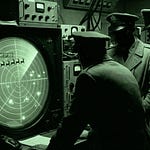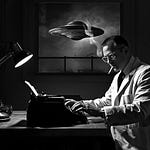Microdot technology represents one of the most elegant solutions in the history of espionage. A perfect marriage of scientific ingenuity and operational necessity that defined Cold War intelligence gathering. The evolution from Professor Goldberg's 1920s experiments to the sophisticated CIA and KGB operations of the 1960s demonstrates how technological innovation continuously shaped the invisible war between superpowers.
The remarkable precision required to create these microscopic information carriers—reducing entire documents to dots smaller than a period while maintaining perfect legibility—showcases the extraordinary technical capabilities intelligence agencies developed during this era. More than mere gadgetry, microdots embodied the Cold War's fundamental challenge: how to transmit vital secrets across hostile territory while remaining completely undetected.
From the accidental discovery of the hollow nickel that unraveled Rudolf Abel's network to the atomic secrets that may have accelerated the Soviet nuclear program, microdot technology proved instrumental in some of the period's most significant intelligence operations. These tiny dots carried information that influenced military strategy, diplomatic relations, and the delicate balance of power that characterized the Cold War.
While digital encryption and satellite communications have largely superseded physical microdots, their legacy endures in modern steganographic techniques and miniaturization technologies. The microdot's story reveals how the intersection of scientific innovation and espionage necessity continues to shape intelligence tradecraft, reminding us that in the shadow world of espionage, the most powerful weapons are often the ones that remain completely invisible.
Let’s listen in as Nathaniel Sheppard narrates this tale on my behalf, shall we?
-Daniel P. Douglas













